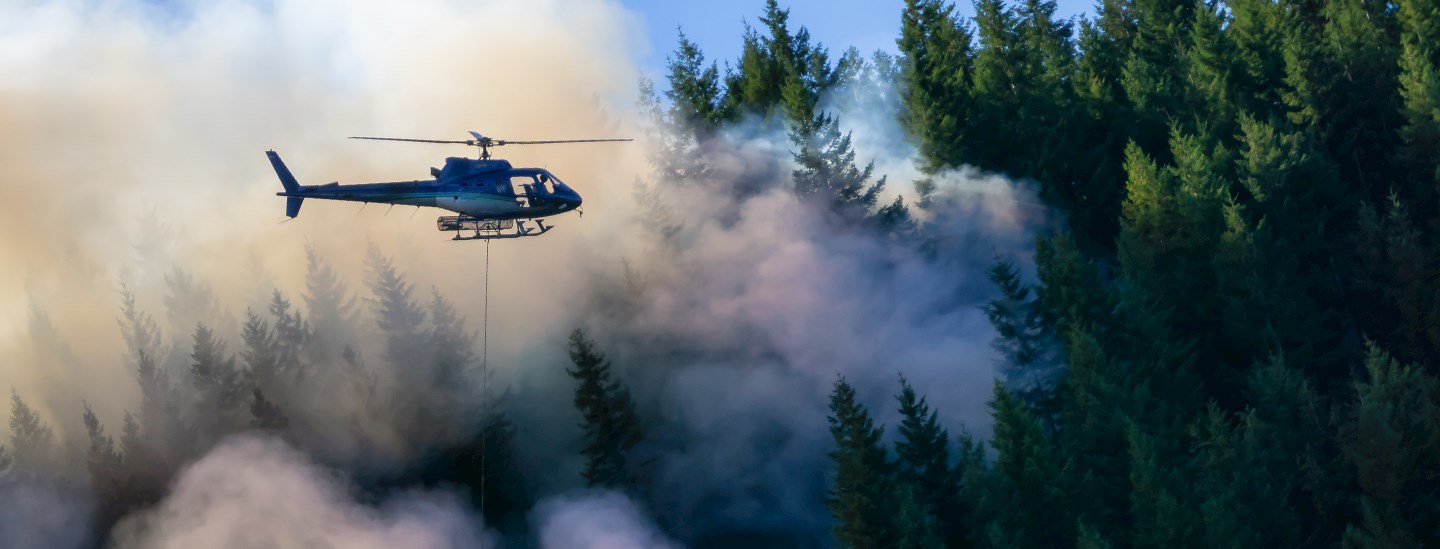Often, wildfires start unnoticed and spread rapidly. If you live in the vicinity of an urban development near wildlands, or on a remote hillside, in a valley, prairie, forest or brushland where flammable vegetation is abundant, your home or property could be vulnerable to wildfires. Take the necessary precautions to ready you and your family, and prepare your property for an incoming wildfire.
Learn how to protect what matters most, evacuate safely and stay healthy post-wildfire. Gallagher is here to help you understand and mitigate risks, as well as help you prepare your home and property for wildfires and forest fires.
- Before a Wildfire Occurs: Review your Policies and Coverage
- Pre-Planning: Preparing your Home & Property for a Wildfire
- Evacuation Steps during a Wildfire
- Filing an Insurance Claim after a Wildfire
Before a Wildfire Occurs: Review your Policies and Coverages
Planning and preparation can make a huge difference in staying safe during and rebounding after a wildfire. Recovering quickly from such a wildfire requires advanced planning, knowledge of what to do in the event of a wildfire, and how to report losses.
In anticipation of a wildfire, it is never too early to start talking to your Gallagher advisor to be sure you secure appropriate coverage, update your current property information, and understand what is covered with your current policy. It’s critical you secure the appropriate insurance coverage.
Pre-Planning: Preparing your Home & Property before a Wildfire
Awareness and preparation are key factors in minimizing risks during a wildfire. By understanding your vulnerabilities and proper planning, you can reduce the detrimental effects to your home and personal property, and ensure the safety of your family and loved ones.
Create a Wildfire Emergency Plan and Kit
If you live in an area prone to wildfires, we recommend creating a personal emergency wildfire evacuation plan to ensure you and your family are prepared. You must also have an action strategy plan if you receive a wildfire evacuation alert. We recommend the following as essential emergency items to create and review on an annual basis:
- Create an Emergency Kit. Maintain an emergency supply kit that will sustain you and your family for a 72-hour period. The American Red Cross has guidelines on how to build a survival kit.
- Practice moving quickly to your protective location. Plan with other family members how to move to a second location, including how much time to reach your destination.
- Communicate with family members. In case you are not together when a wildfire evacuation alert is issued, have a plan on how to reach each other. Texts are faster than phone calls and keeping important numbers stored in your wallet is essential.
- Develop an Emergency Contact List. Develop a contact list and evacuation location for all family members. Include contact procedures post-wildfire.
- Practice first aid skills and emergency response actions. Attend training classes and practice response skills so you know how to administer first aid to any injured parties before professional help arrives.
- Secure important documents. Keep all important documents, such as legal papers, birth certificates, marriage license, financial papers and insurance policy information in a safety deposit box or fireproof and waterproof box.
Prepare your Home & Property for a Wildfire
Wildfires have the power to destroy almost everything in their path. Flying embers can also destroy items. Here are ways you can help safeguard your home from a wildfire.

